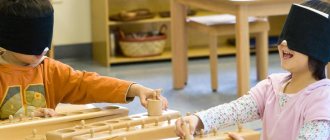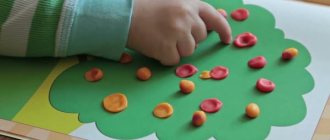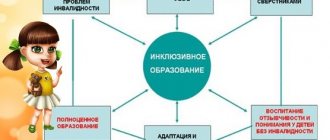Caring for health in kindergarten
Preschool educational institutions provide a whole range of measures to preserve and strengthen children's health. This complex is called “health-saving technologies”. Their meaning is to unite doctors, teachers, parents and children with a common goal. This is a system of health-improving, preventive and corrective measures carried out in the process of preschool education.
What kind of activities are held in kindergarten? This includes group work, warm-ups and gymnastics, sports and outdoor games, relaxation sessions and dynamic breaks for preschoolers. In addition, finger and breathing exercises, as well as eye exercises.
Rules are important
So, whether or not to choose dynamic gymnastics for your kids is the will of the parents. But if they have already made such a choice, it is necessary to organize the process in such a way that the child receives only positive emotions and practical benefits from it. To do this, it is important to eliminate the risk of injury and take into account the age and condition of the baby. If he is not in the mood or is sick, he should not exercise.
What do you need to know to do everything right?
- Consider the physical condition of the baby. The lesson should take place either 1 hour before meals or an hour after. The baby should be in an active state (not just woke up, not going to sleep). By the way, after a month and a half, periods of wakefulness begin to increase, which helps to increase the arsenal of exercises performed.
- To achieve the hardening effect, the baby is completely undressed, and the room temperature is maintained at around 22 degrees. To do this, you can either open the window or ventilate the room before gymnastics.
- An adult's hands should be soft and warm. Therefore, at a minimum, they need to be thoroughly rubbed.
- The surface on which they will work with the baby must be flat and hard (this can be an ordinary table), it must be covered with a flannel diaper or terry towel.
- Children under one year old get tired very quickly from any physical or psychological stress, so do not exercise for too long: 15 minutes a day is more than enough.
- Increase the load gradually. Remember that initially this is stress for the baby, do not make it excessive. A couple of simple exercises will suffice to get you started. It would be wrong, for example, to start throwing a baby over an adult’s head or thigh from the very first day. Gradually increase the number to 2 exercises for each muscle group. The amplitude of movements, as well as their intensity, also needs to be increased gradually. That is why it is better that the classes are conducted not by the parents themselves, but by experienced specialists.
- Each exercise is repeated at least 3 times. It is recommended to alternate different types of load.
- If during classes a child shows a protest against increasing the load, which can be expressed in dissatisfaction, whims, crying, muscle tension, it is worth stopping for a while at the achieved level without raising the bar, and sometimes it is useful to even “roll back” a little. Remember that each child develops individually and masters various exercises as well. Therefore, when building a program for such classes, you need to focus primarily on the condition of the baby himself, on his progress, and not on any standards. Activities should bring joy to the child, and not deprive them of strength.
What are dynamic pauses for preschoolers?
These are small, active activities throughout the day that satisfy every child's natural need for movement. It is vital for a child of this age to run, jump, hop on one leg, copy those around him, and imitate birds and animals. Planned sports activities and walks in the fresh air are usually not enough to satisfy this need. Modern children are often busy with useful, but sedentary activities: drawing and modeling, learning the basics of counting and writing. Such activities must be alternated with active ones.
What meaning do dynamic pauses carry for preschoolers? They entertain children, create an atmosphere conducive to learning, bring elements of relaxation, relieve nervous tension from overload, unite children with each other, promote interaction, educate and instill communication skills, teach new skills and knowledge, develop attention, speech, thinking and memory. They are also able to unobtrusively correct emotional problems in a child’s behavior, prevent psychological disorders, and promote health.
How are they carried out?
What exactly are dynamic pauses for preschoolers? These are outdoor games, round dances, exercises to control posture, physical education minutes and finger games, as well as massage of the hands and face, exercises to rhythmic music and special classes in valeology. Such classes can be started in the morning. For example, line the children up in a circle, inviting everyone to extend their hands and say hello to their neighbors. You can pair children up and invite them to stand elbow to elbow, shoulder to shoulder, back to back. Such breaks not only entertain children, lift their spirits and allow them to finally wake up in the morning, but also help establish a friendly atmosphere in the team.
At this age, the correct development of sound pronunciation is very important, so classes must include words. Dynamic pauses for preschoolers aged 6-7 years must certainly include proverbs and sayings on various topics, and short poetic texts. You can invite the children to recite funny poems about animals together with the teacher, and you can accompany this with a variety of movements.
The essence of the technique
Physical exercise is beneficial for the development of infants, this is undeniable. Dynamic gymnastics is a separate system for the physical development of children. It differs from the usual one by the presence of a dynamic component. With regular gymnastics, the child lies most of the time, and the parents exercise his body. In dynamic complexes, the child is often in the air and subject to active manipulation: he is lifted by his arms or legs, thrown up, turned over, rocked, rotated, thrown over the arm or shoulder of an adult.
It is clear why there is a lot of controversy around this technique. Some consider it an excellent start for a small organism, others see in it only an unjustified risk of injury to the baby.
What is the beneficial effect of such activities on the child’s body?
- First of all, they help normalize the muscle tone with which every baby is born.
- Thanks to active movement, such gymnastics helps to systematically strengthen muscle tissue and improve joint flexibility.
- Moving in space perfectly trains the vestibular apparatus. The skill of maintaining balance is necessary, in particular, for the timely development of independent walking.
- Dynamic exercises help harmonize the activity of the nervous system and strengthen the immune system.
- They improve blood circulation and promote better saturation of the tissues of a small body with oxygen.
- Develop the respiratory system.
- Adapt the baby's body to environmental stress.
- They help the child establish a trusting relationship with his parents, and, accordingly, with the entire world around him, promoting mental and intellectual development.
Many parents are scared off by the shortcomings of this system, which sometimes look scary:
- high risk of injuries (dislocations and subluxations, sprains, joint hypermobility, bruises);
- stress for the child caused by a temporary loss of a sense of security, which, according to many neurologists, may become a cause of hyperactivity in the future;
- an obstacle to the natural decay of the newborn’s reflexes, on which dynamic gymnastics is based and which should normally fade away around 4 months;
- weakening of the instinct of self-preservation, which may in the future lead to underestimation of possible danger in different situations.
In any case, when choosing this method for the development of their baby, parents take full responsibility for the possible consequences.
Training fine motor skills
The degree of development of fine manual motor skills is one of the most important indicators of a child’s overall development. There are entire methods for developing and maintaining health through finger games and hand massage. Already at the age of two, children can be taught self-massage techniques. There are a lot of funny and instructive poems dedicated to children's palms and each finger individually, which they memorize with pleasure and are accompanied by fun exercises.
You need to massage your fingers alternately from the big to the little finger. Each finger is stroked from tip to base, while reciting rhymed riddles and nursery rhymes. The palms can be massaged with balls of different sizes, a hexagonal pencil or rosary - these are also dynamic pauses for preschoolers. The older group (starting from 5 years old) is already able to understand what self-massage of the face is for the prevention of influenza and ARVI. Children are taught to look for special points on the face and neck, by pressing and massaging which they can prevent the development of a cold.
When and how do we start?
So, if parents choose such a system of physical development for their child, where and when to start dynamic gymnastics for infants?
As for age, it is not recommended to start classes earlier than one month of age, when the child’s muscles and bones are still too fragile. Parents should not show fanaticism, but prudence, thinking, first of all, about the well-being of their child, and not about what and how much he can “outpace” the children he knows. On the other hand, starting classes after 4, and even more so 6 months, if the baby has not had experience with dynamic exercises before, is also harmful, since the child is already gaining weight, and his muscles and ligaments by this age are not as elastic and pliable as at 1–1.5 months. Accordingly, the risk of injuries and sprains will be higher.
You need to do this kind of gymnastics every day. The complexes usually begin with a warming massage (it includes stroking, kneading and rubbing), continue with the usual simple exercises for arms and legs (swings, bending, lifting), and only then add dynamics. Examples of the simplest dynamic exercises include rocking the child back and forth with support from the arms, vertical rotations (the baby is held by the arm or leg), swinging on a fitball, and others.
When starting classes, objectively assess your strength. Watching videos on the Internet will most likely not be enough. Let at least the first few lessons be conducted by a qualified specialist (a chiropractor or a rehabilitation therapist), from whom you will learn how to properly manipulate the baby’s body, especially how to properly grasp its joints to prevent injuries. Better yet, ask him for a training program in which the types and quantities of exercises will be selected in the desired progression.
Other games and exercises
A set of physical exercises used during dynamic pauses is aimed at correcting posture, preventing flat feet, strengthening muscles and developing coordination. Exercises are carried out simultaneously with reading poetry, cheerful music, counting or ditties. Dynamic breaks for preschoolers to music also have a very positive effect on children who move, dance and jump with pleasure, and tap the rhythm on a tambourine or drum with their fingers on command.
To develop coordination of movements, they also use walking forward with their backs, throwing a ball, and playing with a skipping rope. There are many games where children must portray certain characters or guess who or what they are talking about based on characteristic movements. During school hours, sitting children can be asked to do a “dry wash” - rub their hands, “wash” their face, comb their hair, massage their eyebrows, stroke the wings of their nose with their index fingers, rub their lips and earlobes.
When you can and cannot exercise
Of course, dynamic gymnastics can be useful for the development of all healthy children. But it takes on special significance for children born by caesarean section. The baby is removed from the uterus a few minutes after the start of the operation. And the baby is deprived of a long adaptation period of childbirth, during which he, passing through the birth canal, prepares for new living conditions, developing the necessary adaptation reactions. Accordingly, adaptation does not occur. The baby does not get the first experience of overcoming stress, which in the future, according to perinatal psychologists, can significantly reduce his determination, will and endurance.
It is in such situations that dynamic gymnastics can teach a small body (and, accordingly, the baby’s psyche) to endure high loads and adapt to stressful situations.
However, there are a number of cases when classes with children using this system are contraindicated:
- increased or decreased tone, which is not physiological;
- neurological diseases;
- heart diseases;
- high intracranial pressure;
- joint dysplasia or increased mobility, etc.
Therefore, before starting dynamic exercises with their baby, parents should definitely show him to a pediatrician, orthopedist, or neurologist.









